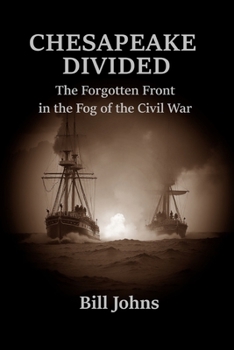Chesapeake Divided: The Forgotten Front in the Fog of the Civil War
Chesapeake Divided: The Forgotten Front in the Fog of the Civil War is a haunting journey through the waterways, shorelines, and divided loyalties of one of America's most strategic-but least remembered-regions of the war between North and South. Set across Maryland, Virginia, and the islands and inlets of the Chesapeake Bay, this book offers a piercing look at the Civil War's most elusive theater: a borderland not just between Union and Confederate sympathies, but between visibility and vanishing. While battle lines formed on dry ground, the Chesapeake swirled with something murkier. This was a war fought in ferries and whispers, in creeks and taverns, in the hold of a schooner or the backroom of a post office. The region's fishermen, enslaved families, spies, and pilots navigated both literal and moral fogs-shifting allegiances in a landscape that seemed to change with every tide. Here, geography was not just setting but strategy. A marsh could hide a fugitive; a sandbar could ground an ironclad; a cousin in Talbot or Lancaster could quietly ferry a soldier-or a secret-across the water without ever speaking a word. Drawing from the hidden archives of watermen, exiles, mapmakers, and contrabands, Chesapeake Divided: The Forgotten Front in the Fog of the Civil War reveals the war's silent edge. From the burned wharves of Baltimore to the abandoned farms of Mathews County, from the refugee camps at Point Lookout to the ghost roads that once crossed the Choptank, the book captures a theater of conflict where nothing was fixed and everything could be ferried-men, intelligence, vengeance, and hope. Author Bill Johns brings to this work the same restrained, poetic clarity found in his previous Chesapeake titles-Chesapeake Gothic, Chesapeake Bay Noir, and Chesapeake Bay Bridge-which explored the region's ghosts, crimes, and monumental contradictions. Here, he turns his attention to the Civil War not as a matter of generals and campaigns, but as a slow, tidal story told by small towns, hushed crossings, and the moral infrastructure of the shore. The book moves through places that still carry the war's residue: Tangier and Smith Island, St. Mary's and Crisfield, Norfolk and North Beach. In these pages, a map is not merely a record-it is a rumor. A ferry line is not just a means of travel-it is a corridor of belief. With lyrical prose grounded in rigorous research, Johns resurrects a Chesapeake at war with itself and at war with forgetting. He shows how the region was not peripheral to the conflict but central to its logistics, its mythologies, and its aftermath. It was here that the divided nation lapped against itself-shore to shore, creed to creed-without ever drawing a clear line. Perfect for readers of American history, Civil War nonfiction, regional cultural studies, and historical memory, this book reframes the Chesapeake not as backdrop but as protagonist. It joins the recent wave of historical storytelling that seeks not to glorify war, but to understand its quiet margins and the people who lived along them. The Civil War did not pass the Chesapeake by. It infiltrated it-soundlessly, ambiguously, enduringly. For those who want to understand not just what happened, but how memory endures in water, silt, and silence, this book offers both revelation and reckoning. Step into the fog, and remember what the land has chosen not to forget.
Format:Paperback
Language:English
ISBN:B0FCFCNBDQ
ISBN13:9798287313807
Release Date:June 2025
Publisher:Independently Published
Length:404 Pages
Weight:1.19 lbs.
Dimensions:0.8" x 6.0" x 9.0"
Related Subjects
HistoryCustomer Reviews
0 rating





